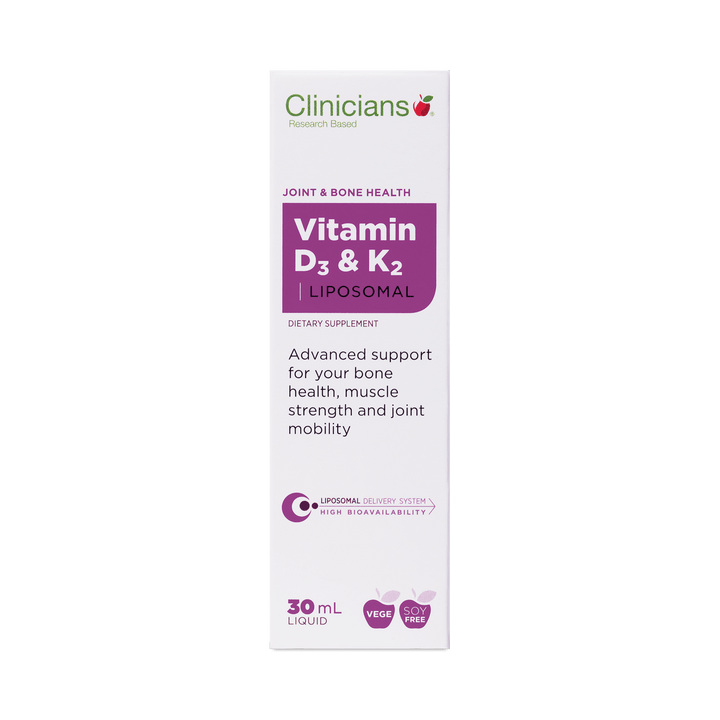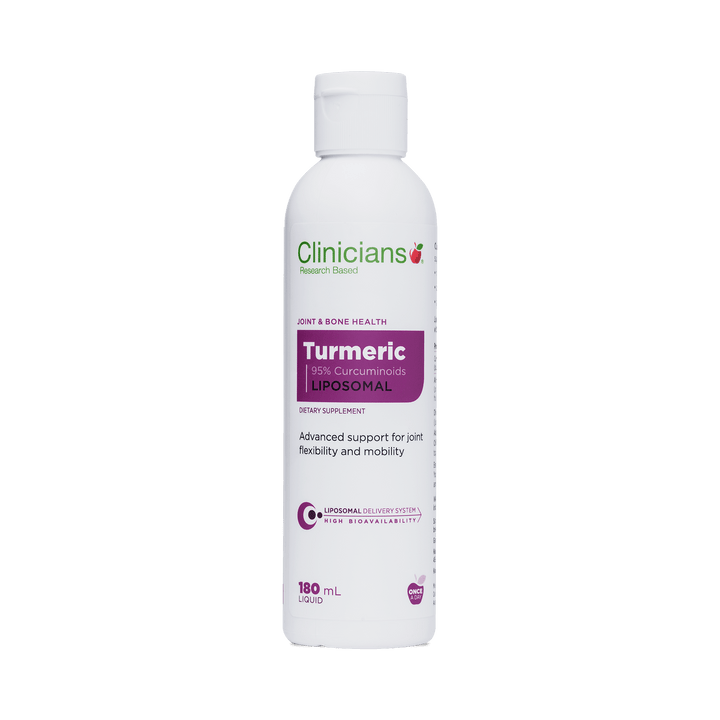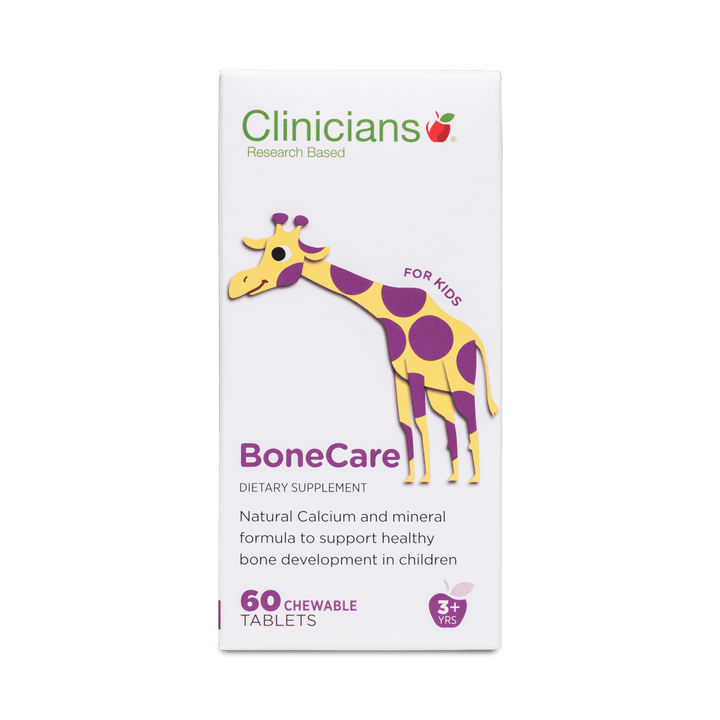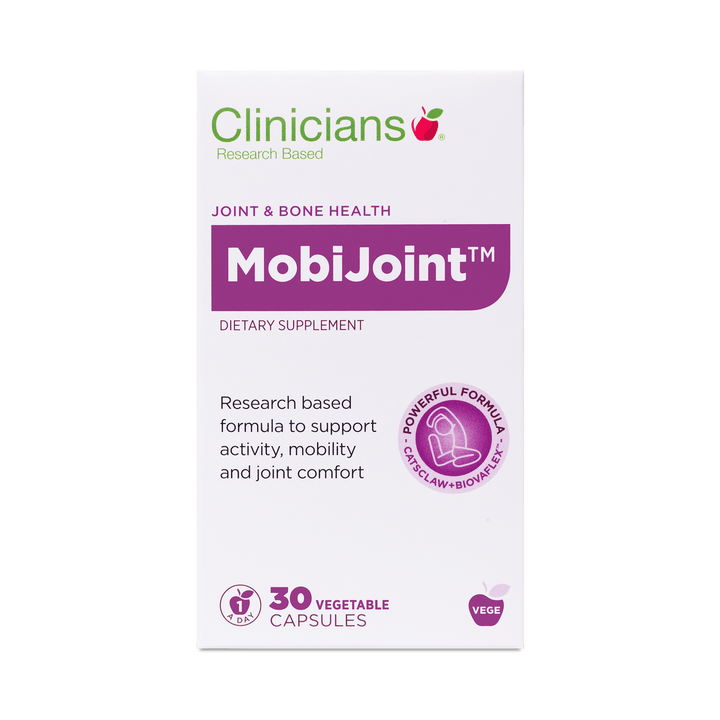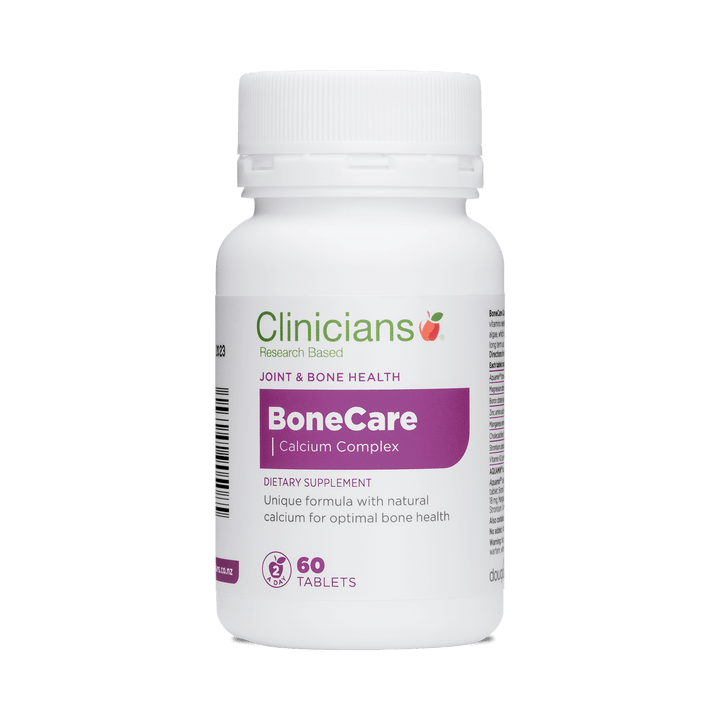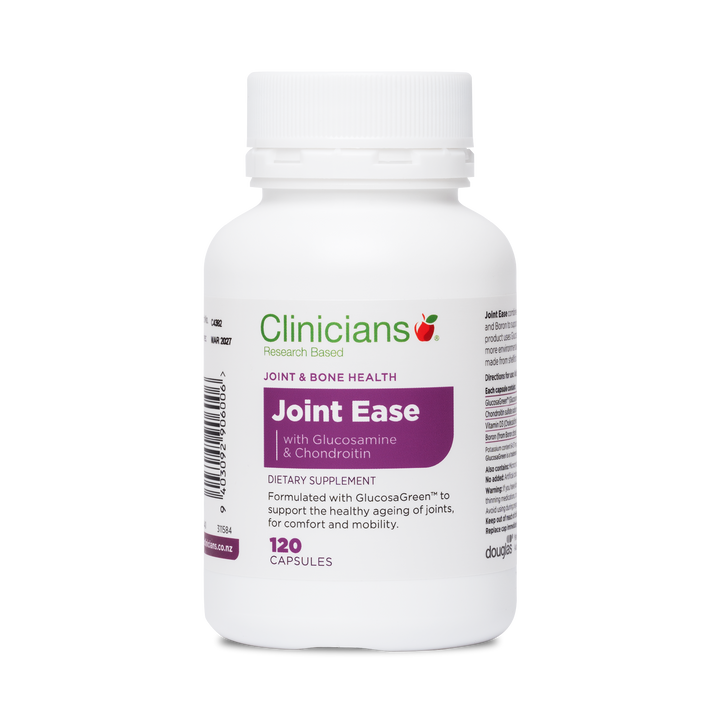Good flexibility and balance are key to great joint health so test your joint capabilities and learn how to improve them.
The term flexibility means the range of movement in your joints and muscles. Having good flexibility leads to good balance, providing protection and strength to your joints. Both flexibility and balance are essential for playing sports, exercising or performing simple daily activities, such as:
- Climbing stairs,
- Picking up a ball for the dog
- Crouching on the ground to play with the kids
Children's joints are usually more pliable due to their bones being made of flexible cartilage (which hardens as they get older) and because their ligaments naturally have more stretch-ability. It is important for adults, no matter what age, to take care of their joint flexibility and balance. Doing this throughout their lifetime will give them the freedom to live the life they want.
How your daily routine affects joint health
Our daily routine can have a significant effect on our joints, particularly for those in the workforce that spend a lot of time seated. Sitting in similar positions for extended periods of time can stiffen muscles, making them inflexible, fatigued and uncomfortable. As time goes on, we develop body movements and posture habits that can lead to reduced mobility of joints. Even being on your feet all day can affect joint health.
Exercise can also create muscular tension and stiffness, for example in the hamstrings, ankles, hips and shoulders. So, it is especially important to stretch after exercising.
It is helpful for you to determine your physical strengths and weaknesses. Then you can assess what your needs are and what stretches, or exercises might address them. What's most important, is that you continue to maintain your joint health to prevent injury or discomfort as you age.
Test your joint health
Here are two simple tests that you can use to assess your joint flexibility and balance. Make sure you do them after a warm-up or in the afternoon, avoid trying them first thing in the morning because our joints are stiffer from lack of use and not as flexible.
The 30-Second Balance Test
This is a simple test so you can determine whether you have good balance or if you need to take action to improve it. You’ll need to find someone to time you, as you have to keep your eyes closed.
Here's what to do:
1. Stand barefoot on a hard floor (avoid carpet and rugs).
2. Close your eyes and bend one knee and lift your foot. If you’re right-handed, stand on your right foot and lift your left foot (and vice versa if you are left-handed) about 15 centimeters from the floor.
3. Write down the length of time it takes for you to keep your foot off the floor without wobbling or opening your eyes.
4. Repeat the test 3 times and then add up your total time and divide it by 3 to find your average balance base. For example, if test 1 was 10 seconds, test 2 was 14 seconds and test 3 was 12 seconds it would be: 10+14+12=36 divided by 3 = 12 seconds.
Once you have your results look at the table below to find out your 'Balanced Based Age':
Balance Time |
Balance Based Age |
|
4 seconds |
70 years |
|
5 seconds |
65 years |
|
7 seconds |
60 years |
|
8 seconds |
55 years |
|
9 seconds |
50 years |
|
12 seconds |
45 years |
|
16 seconds |
40 years |
|
22 seconds |
30 - 35 years |
|
28 seconds |
20 - 30 years |
The Sitting-Rising test
This test was developed by a Brazilian physician Claudio Gil Araujo. It was originally intended to predict health risks in middle-aged and older people. It can be a useful indicator for all ages to test joint flexibility, strength and balance.
Here's how to do the test:
1. Stand barefoot and try to sit on the floor with your legs crossed with as little support as possible from your hands, legs, arms or other body parts.
2. From the seated position, try to stand up again with as little support as possible.
3. Give yourself 5 points if you sat with no support and 5 points if you got up without support. For each support required (such as a hand on knee or hand or knee on the floor) subtract 1 point. Subtract ½ point if you were wobbly both sitting and standing.
4. Do the test twice and combine your best scores. The best score you can achieve is 10/10, which means you have strong and flexible joints!
Tips for improving your joint health
Once you've done the tests, you'll have a good idea of your level of flexibility and balance. If you want to improve your joint health, there are plenty of things you can do. The following are some helpful everyday tips. You'll start noticing the benefits in just a few weeks!
Flexibility and balance exercises
Increase your range of motion and balancing skills by using specific exercises.
Yoga and Tai Chi can help you:
- Lengthen your muscles,
- Increase your range of motion and flexibility
- Give you physical strength
- Improve your balance
Aside from gaining physical benefits from Yoga and Tai Chi, both of them will teach you how to slow down and relieve stress.
Another excellent and fun way to increase flexibility and balance is by dancing. Most dance styles will help your joints and muscles become more supple, improving your coordination, posture and alignment. Not only will it help with your joint health, it's also great for fitness and balancing hormones.
Keep moving
Staying active and keeping your body moving throughout your day is particularly important for those that are living sedentary lifestyles. Invest in a standing desk or regularly take a 5 to 10 min walk. This is a great opportunity to take a break from work too. Get some fresh air and sun, a drink to keep hydrated or catch up with a colleague somewhere in the office. Find any excuse to keep moving!
Don't forget to stretch
Stretching builds and maintains flexibility and balance. After exercise, stretch out your joints and muscles while you cool down. This can help reduce muscle fatigue, release tension and prevent potential post-workout muscle and joint soreness. It's also a great opportunity to test your balance skills.
Fine-tune your diet
Aside from the physical things you can do for flexibility and balance, the right nutrition for your joints can provide additional benefits. Take a closer look at your diet to make sure the following nutrients are included each day:
- Essential Fatty Acids (Omega 3): These can support joint health, mobility and comfort.
- Vitamin A, C and E: These are all antioxidants, which keep your joints healthy. They also support joint cartilage repair and comfort.
- Calcium, Vitamin D and K: These work synergistically together to support bone strength and density.
- Magnesium: This will support your muscle and joint movement and relaxation.
Have a look online for your favourite foods high in these nutrients and incorporate them into your daily diet.
Need nutritional support?
Once you've explored your joint flexibility and level of balance, you can practice as many of the above tips as you like.
If you're looking for additional support with nutrition, Clinicians has a wide range of excellent joint support products such as MobiJoint, Complete Joint Ease, Sunshine Vitamin D3 and Magnesium 625.
Not sure which one is right for you? Book a free chat with one of our in-house Naturopaths.



